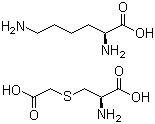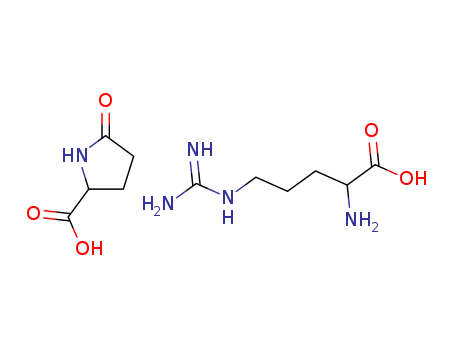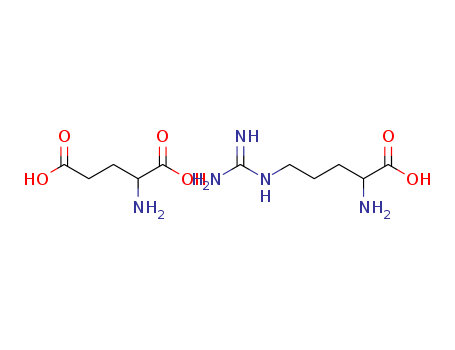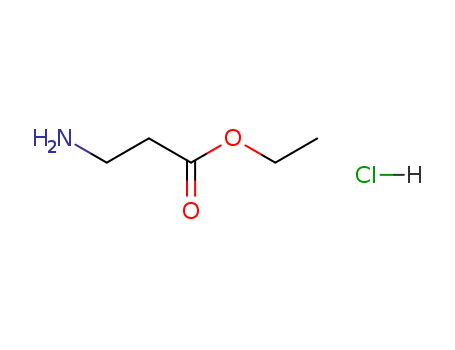- Product Details
Keywords
- Sodium hyaluronate supplier
- Sodium hyaluronate China
- Sodium hyaluronate price
Quick Details
- ProName: Competitive price Sodium hyaluronate s...
- CasNo: 9067-32-7
- Molecular Formula: (C14H20NO11Na)n
- Appearance: powder
- Application: food pharma nutrition healthcare produ...
- PackAge: 25kg/drum
- ProductionCapacity: Metric Ton/Day
- Purity: 99%
- Storage: storage in shady and cool warehouse
- Transportation: transport as the regulation of chemica...
- LimitNum: 0 Metric Ton
Superiority
1.USP/EP/BP/FCC/CP 2.GMP/DMF/KOSHER/HALAL/HACCP 3.10 Years Experience 4.Delivery within 5 days 5.OEM ability …
Details
1.USP/EP/BP/FCC/CP
2.GMP/DMF/KOSHER/HALAL/HACCP
3.10 Years Experience
4.Delivery within 5 days
5.OEM ability
1.Introduction of Sodium hyaluronate
Sodium hyaluronate is the sodium salt of hyaluronan. The name hyaluronic acid is derived from the Greek word ?αλος (hyalos) meaning vitreous, and uronic acid as it was first isolated from the vitreous humour in the eye and possesses a high uronic acid content. The term hyaluronate also refers to the conjugate base of hyaluronic acid. Because the molecule typically exists in vivo in its polyanionic form, it is most commonly referred to as hyaluronan. It is a visco-elastic polymer normally found in the aqueous and vitreous humour.
Sodium hyaluronate is a viscous solution consisting of a high molecular weight (500,000-730,000 daltons) fraction of purified natural sodium hyaluronate in buffered physiological sodium chloride. Hyaluronic acid is a natural complex sugar of the glycosaminoglycan family and is a long-chain polymer containing repeating disaccharide units of Na-glucuronate-N-acetylglucosamine. Sodium hyaluronate occurs naturally on the corneal endothelium, bound to specific receptors for which it has a high affinity.
2.Properties of Sodium hyaluronate
(1)ACD/LogP: -1.131 (2)# of Rule of 5 Violations: 2 (3)ACD/LogD (pH 5.5): -3.85 (4)ACD/LogD (pH 7.4): -4.83 (5)ACD/BCF (pH 5.5): 1.00 (6)ACD/BCF (pH 7.4): 1.00 (7)ACD/KOC (pH 5.5): 1.00 (8)ACD/KOC (pH 7.4): 1.00 (9)#H bond acceptors: 12 (10)#H bond donors: 7 (11)#Freely Rotating Bonds: 10 (12)Polar Surface Area: 131.45 ?2 (13)Polarizability: 10-24cm3 (14)Flash Point: 432.5 °C (15)Enthalpy of Vaporization: 131.19 kJ/mol
(16)Boiling Point: 791.6 °C at 760 mmHg (17)Vapour Pressure: 5.77E-29 mmHg at 25°C
3.Structure Descriptors of Sodium hyaluronate
SMILES:
[Na+].[O-]C(=O)[C@H]2O[C@@H](O)[C@H](O)[C@@H](O)[C@@H]2O[C@@H]1O[C@@H]([C@@H](O)C[C@H]1NC(=O)C)CO
Std. InChI:
InChI=1S/C14H23NO11.Na/c1-4(17)15-5-2-6(18)7(3-16)24-14(5)26-10-8(19)9(20)13(23)25-11(10)12(21)22;/h5-11,13-14,16,18-20,23H,2-3H2,1H3,(H,15,17)(H,21,22);/q;+1/p-1/t5-,6+,7-,8-,9-,10+,11+,13-,14+;/m1./s1
Std. InChIKey:
MAKUBRYLFHZREJ-JWBQXVCJSA-M
4.Pharmacodynamics
Hyaluronan is similar to a substance that occurs naturally in the joints. It may work by acting as a lubricant and shock absorber in the joint, helping the knee to move smoothly, thereby lessening pain.
5.Mechanism of action
Hyaluronan functions as a tissue lubricant and is thought to play an important role in modulating the interactions between adjacent tissues. Sodium hyaluronate is a polysaccharide which is distributed widely in the extracellular matrix of connective tissue in man. It forms a viscoelastic solution in water which makes it suitable for aqueous and vitreous humor in ophthalmic surgery. Mechanical protection for tissues (iris, retina) and cell layers (corneal, endothelium, and epithelium) are provided by the high viscosity of the solution. Elasticity of the solution assists in absorbing mechanical stress and providing a protective buffer for tissues. This viscoelasticity enables maintenance of a deep chamber during surgical manipulation since the solution does not flow out of the open anterior chamber. In facilitating wound healing, it is thought that it acts as a protective transport vehicle, taking peptide growth factors and other structural proteins to a site of action. It is then enzymatically degraded and active proteins are released to promote tissue repair. Sodium hyaluronate is being used intra-articularly to treat osteoarthritis. Cell receptors that have been identified for sodium hyaluronate fall into three main groups: CD44, Receptor for Hyaluronan-mediated motility (RHAMM) and intracellular adhesion molecule-1 (ICAM-1). CD44 mediates cell interaction with Hyaluronan and the binding of the two functions as an important part in various physiologic events, such as cell aggregation, migration, proliferation and activation; cell-cell and cell-substrate adhesion; endocytosis of Hyaluronan, which leads to Hyaluronan catabolism in macrophages; and assembly of petircellular matrices from HA and proteoglycan. CD44 has two important roles in skin, regulation of keratinocyte proliferation in response to extracellular stimuli and the maintenance of local Hyaluronan homeostasis. ICAM-1 is known mainly as a metabolic cell surface receptor for Hyaluronan, and this protein may be responsible mainly for the clearance of Hyaluronan from lymph and blood plasma, which accounts for perhaps most of its whole-body turnover. Ligand binding of this receptor, thus, triggers a highly coordinated cascade of events that includes the formation of an endocytotic vesicle, its fusion with primary lysosomes, enzymatic digestion to monosaccharides, active transmembrane transport of these sugars to cell sap, phosphorylation of GlcNAc and enzymatic deacetylation. ICAM-1 may also serve as a cell adhesion molecule, and the binding of Hyaluronan to ICAM-1 may contribute to the control of ICAM-1-mediated inflammatory activation.
6. Package information
25kg/drum
.jpg)
7. Delivery information
Delivery within 5 days
.jpg)










